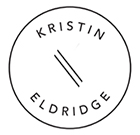The art of newborn photography is delicate, heartwarming, and incredibly rewarding. Capturing those early moments of a baby’s life requires not just a creative eye, but also an understanding of how to effectively pose newborns. Developing a seamless newborn posing workflow is essential for photographers looking to enhance their sessions, ensuring they can create beautiful, timeless images while maintaining the comfort and safety of their tiny subjects. In this post, we’ll dive into essential tips for refining your newborn posing workflow, ensuring you’re well-equipped to capture all the moments with confidence and skill.
1. Preparation is Key
Before your tiny client arrives, make sure your studio or shooting space is well-prepared. This means having a warm environment, white noise (here’s the one I use), a sturdy bean bag and blankets, ready and waiting. Don’t forget to have your camera gear set up and tested. A checklist can be incredibly helpful to ensure you don’t overlook any details. Preparing your space also involves considering the lighting setup in advance, aiming for soft, diffused light that flatters the delicate features of a newborn. I use natural light, so I have certain hours that I book newborn sessions when I know the light will be coming in through the windows.
2. Safety First
Above all, the safety of the newborn is paramount. Never attempt poses that could put the baby at risk. Thankfully the trends are moving toward natural newborn photography. So, it’s not about balancing babies on top of props. It’s about soothing them into natural poses on a bean bag or bed.
3. Soothing Techniques
A calm baby is much easier to pose, so mastering soothing techniques is a crucial aspect of your workflow. Gentle rocking, soft shushing sounds, or a white noise machine can help keep the newborn calm during the session. Keeping your hands warm will also prevent the baby from startling when you touch them to adjust their pose.
4. Efficient Posing Flow
Developing an efficient posing flow means having a plan for how you’ll transition the baby from one pose to another, minimizing the need to move them excessively.
- I start with poses on the back, which are typically the easiest. I also swaddle the baby in the beginning and take those shots before pulling their arms out. This helps to get them into a deeper sleep so you can pose them a little easier as the session goes on. Planning your posing sequence can significantly streamline your session and reduce the time the baby is being handled.
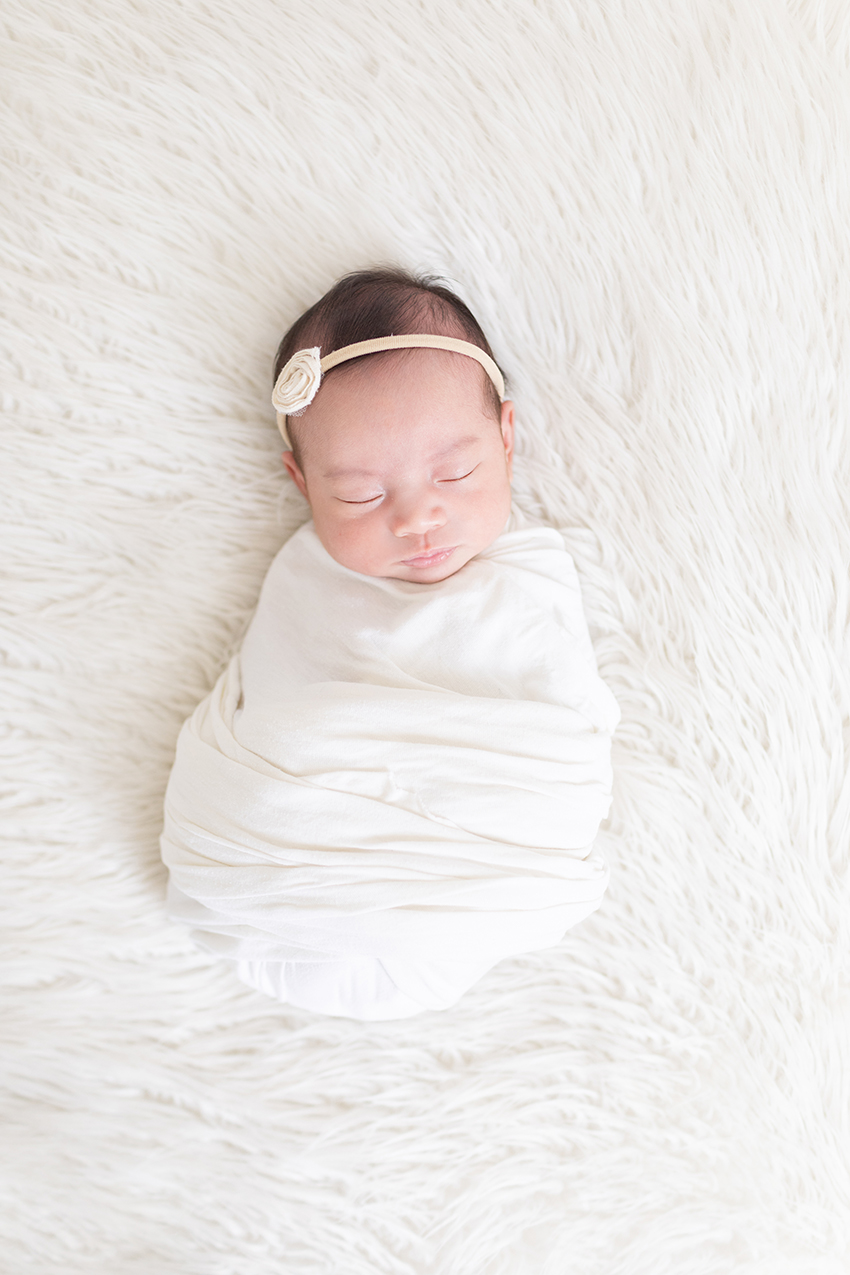
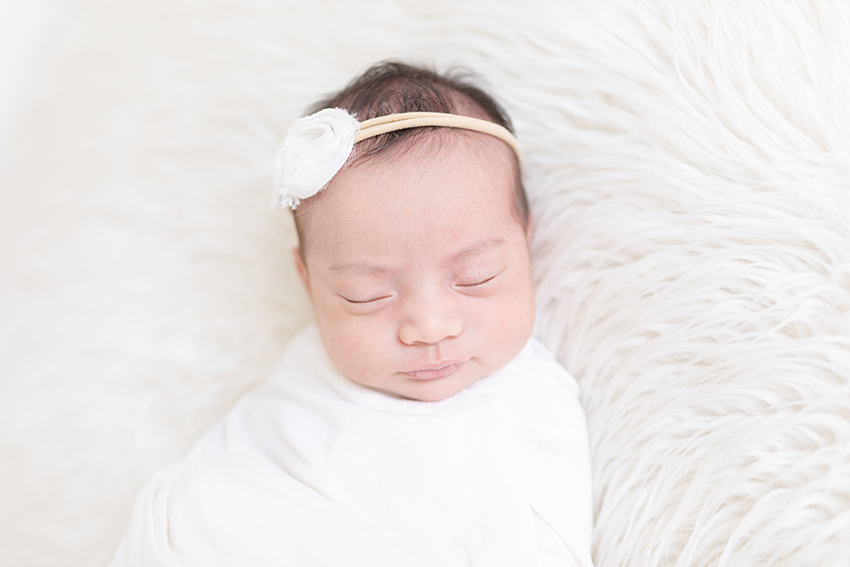
- From there I’ll move into a prop, like a basket to add a bit more variety to the swaddled pose.
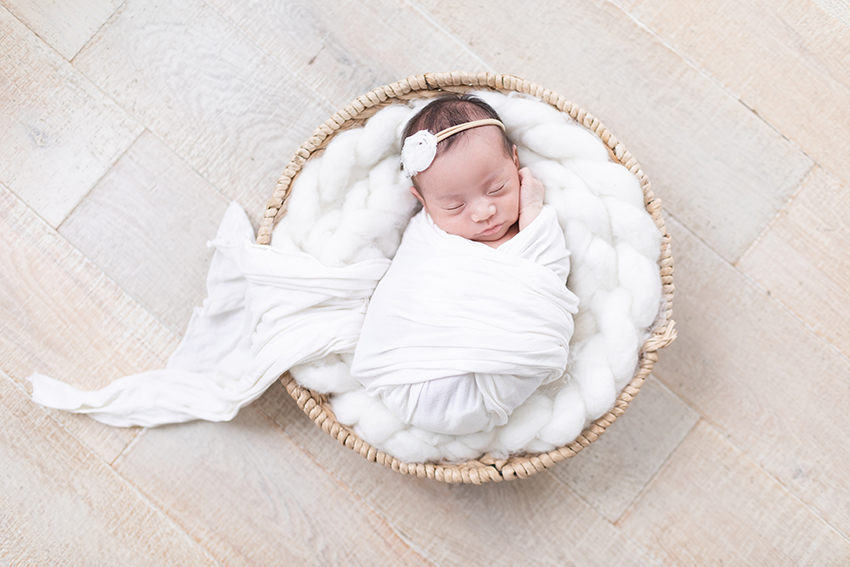
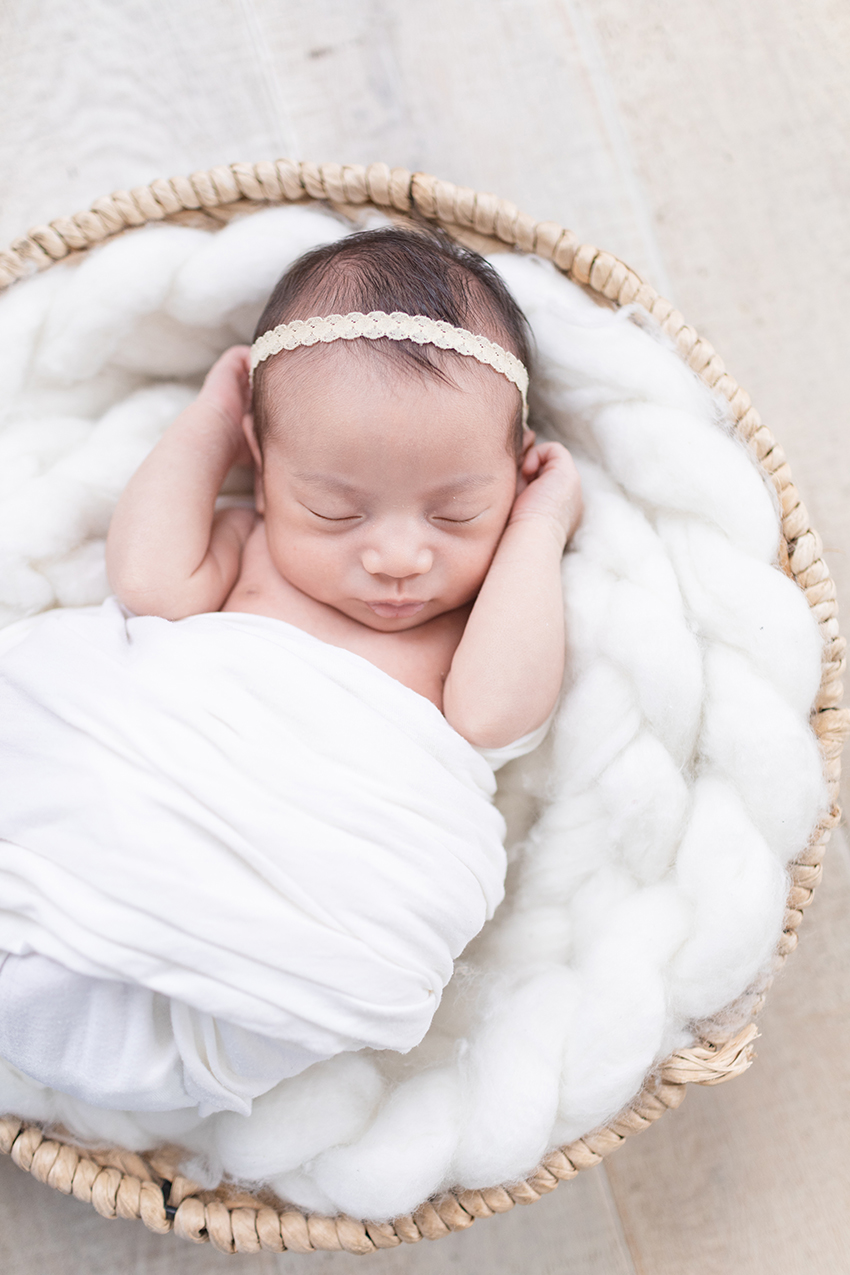
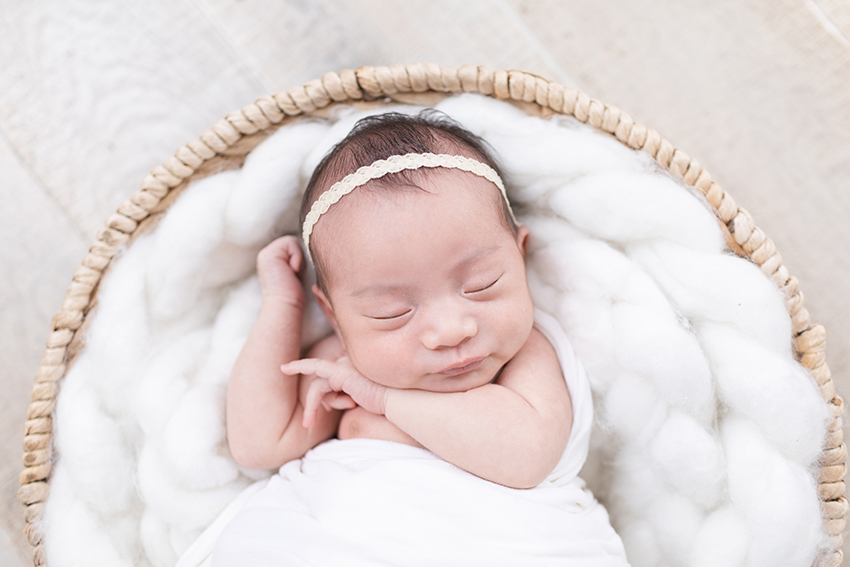
- After the basket, I like to gently pull an arm (or two) from beneath the swaddle. During this time, I move very slowly so the baby doesn’t wake up. Once they’re settled, I try to include some macro shots of hands, feet and face details.
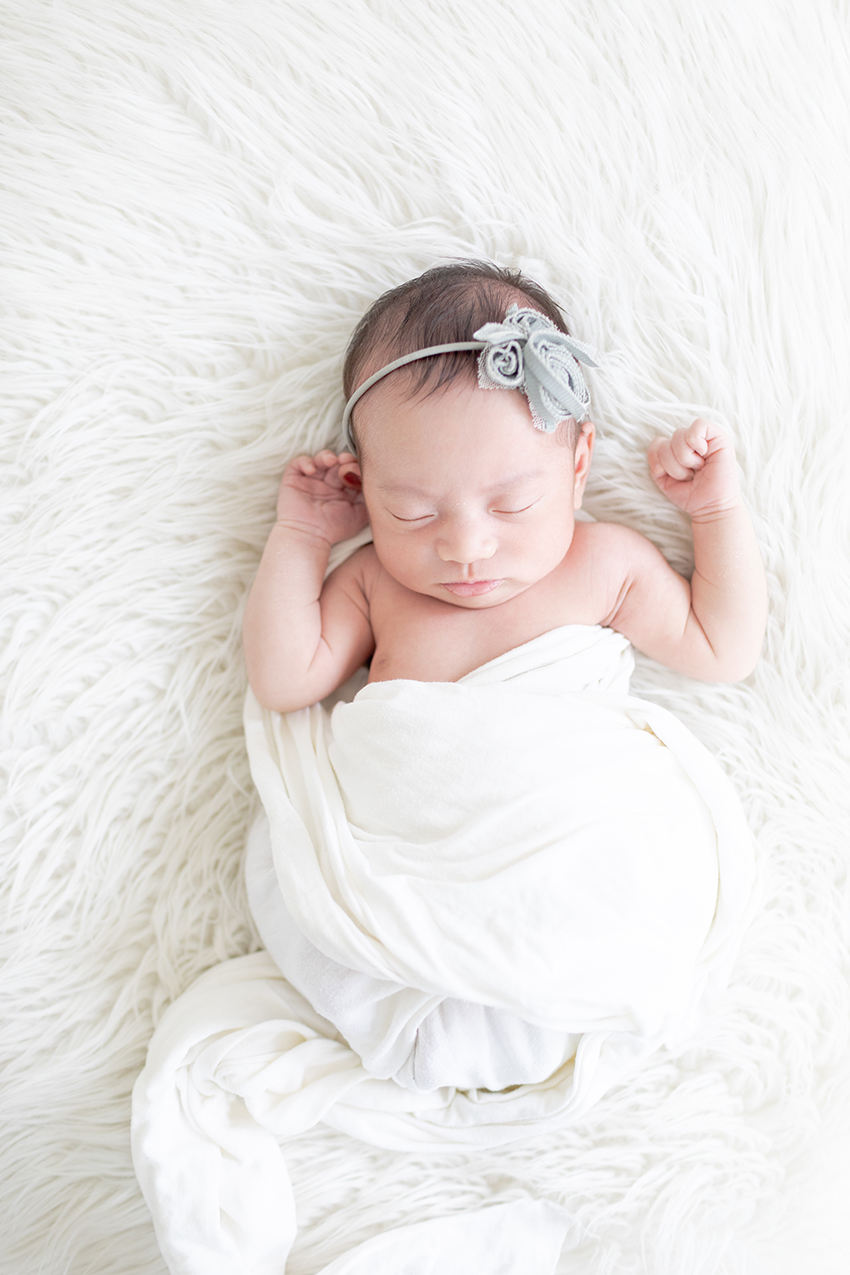
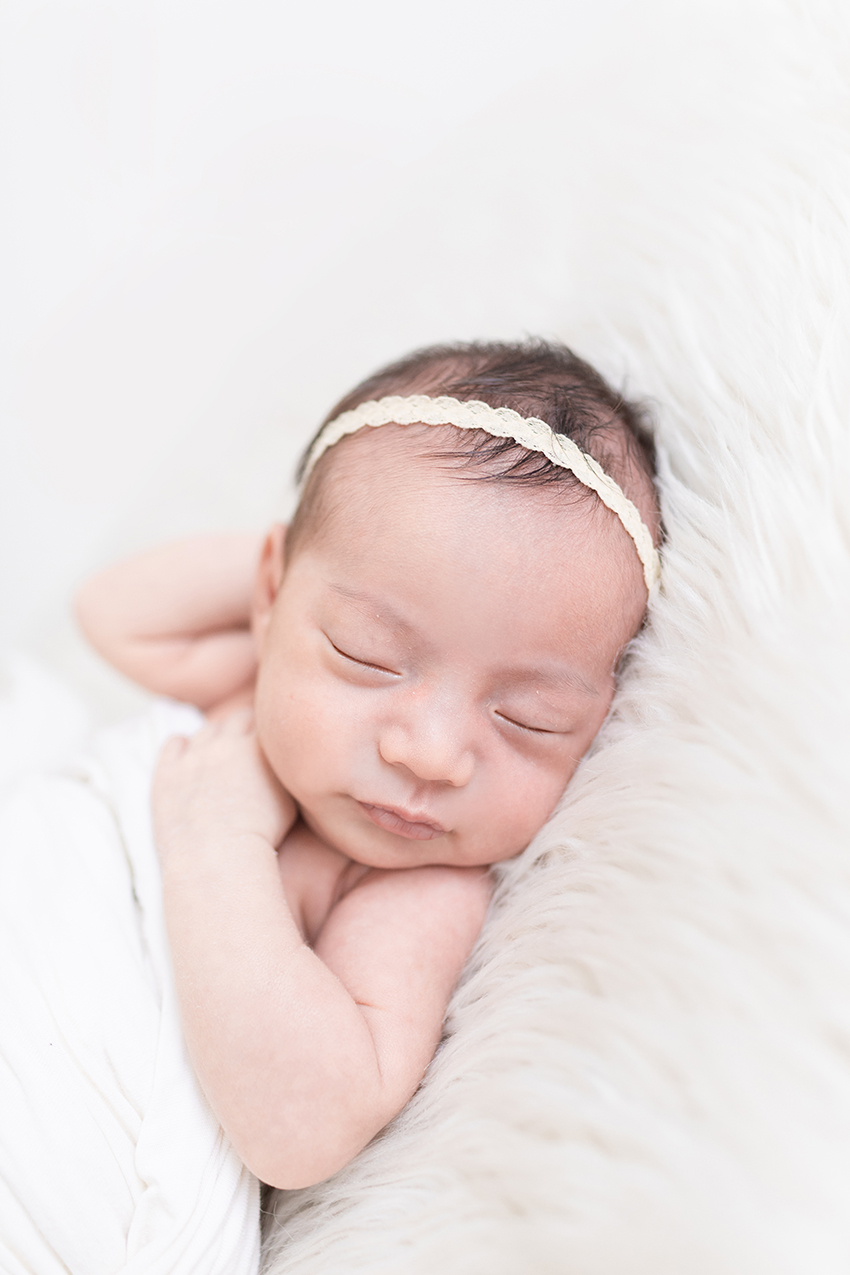
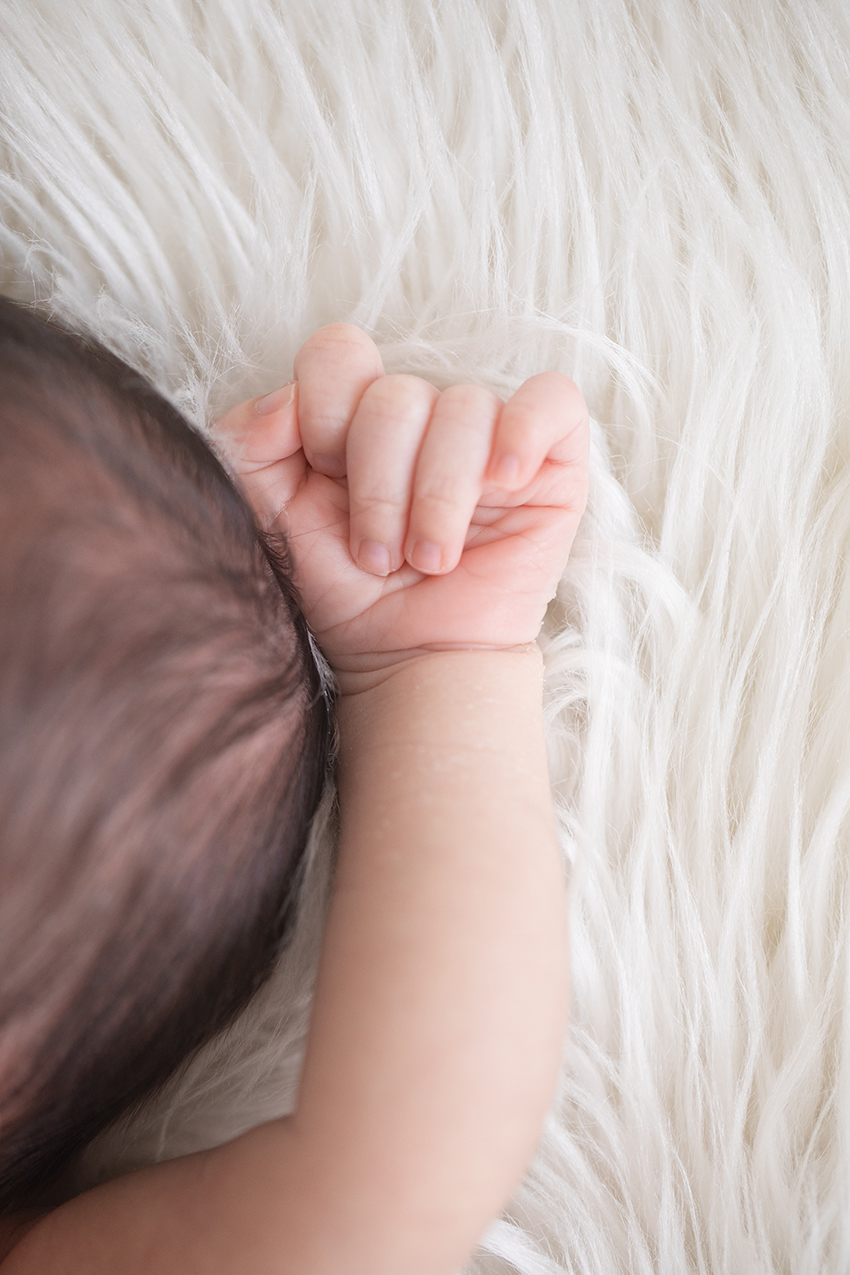
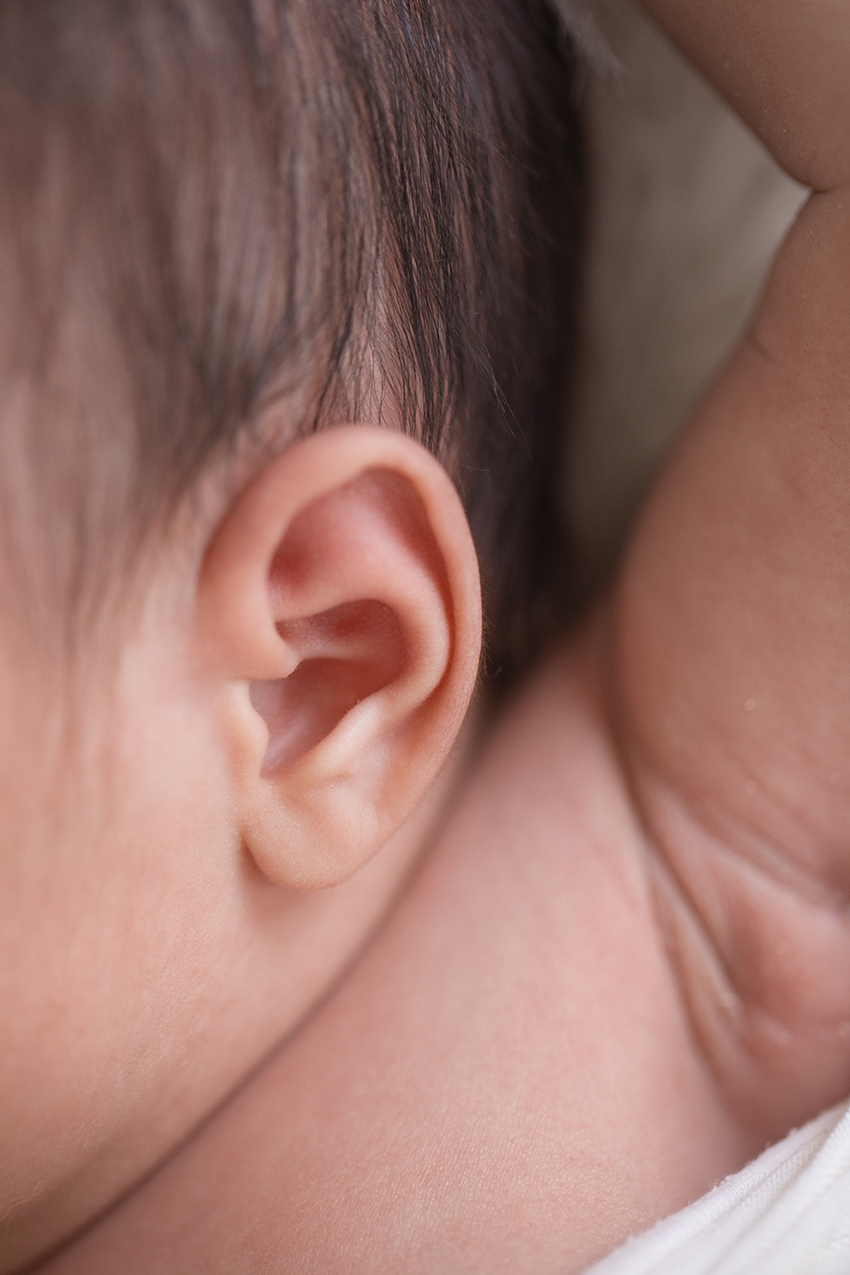
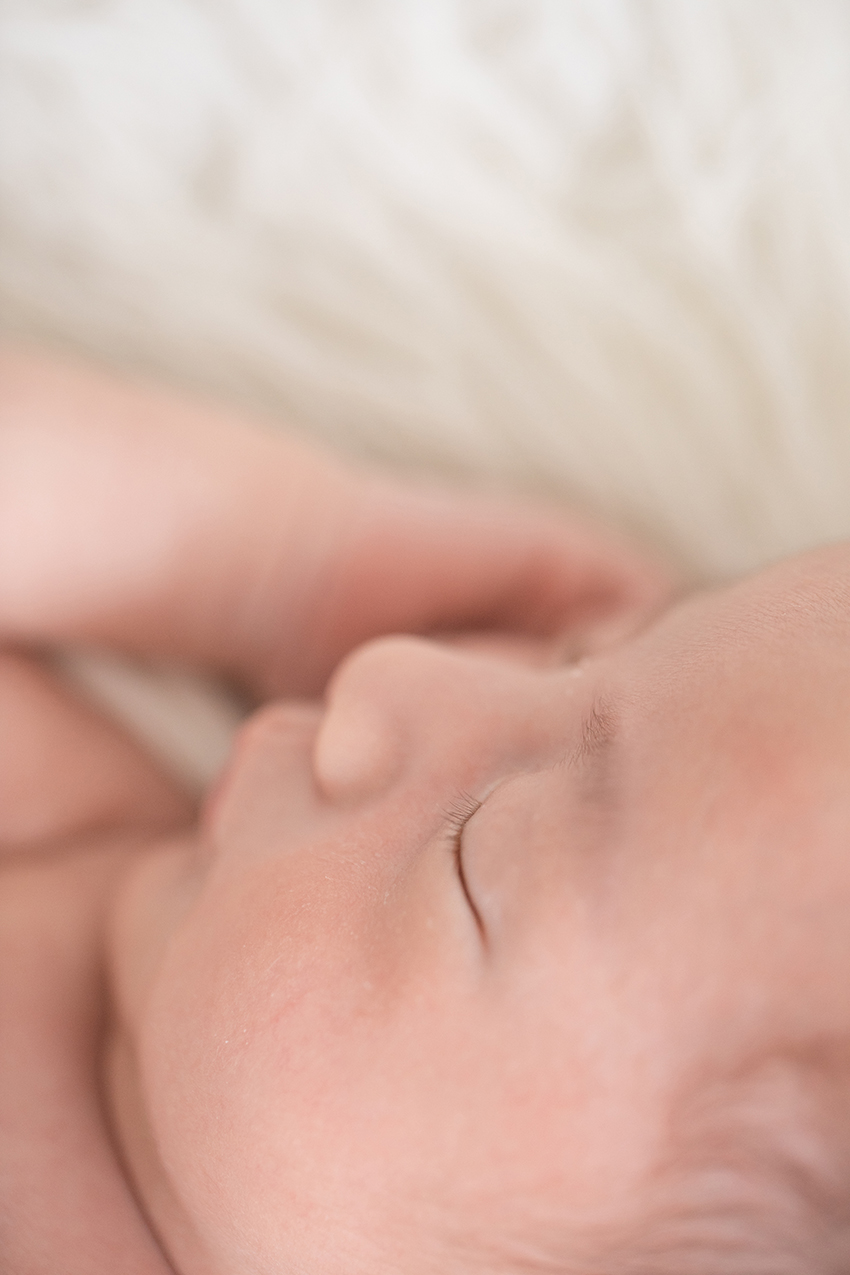
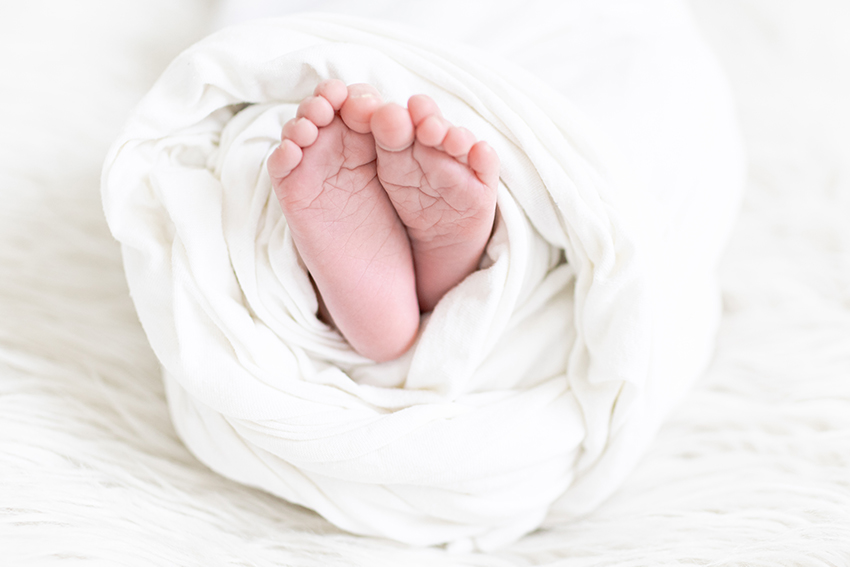
- By this time, the baby is most likely very sleepy and I can gently and slowly change the wrap and headbands or hats for even more variety.
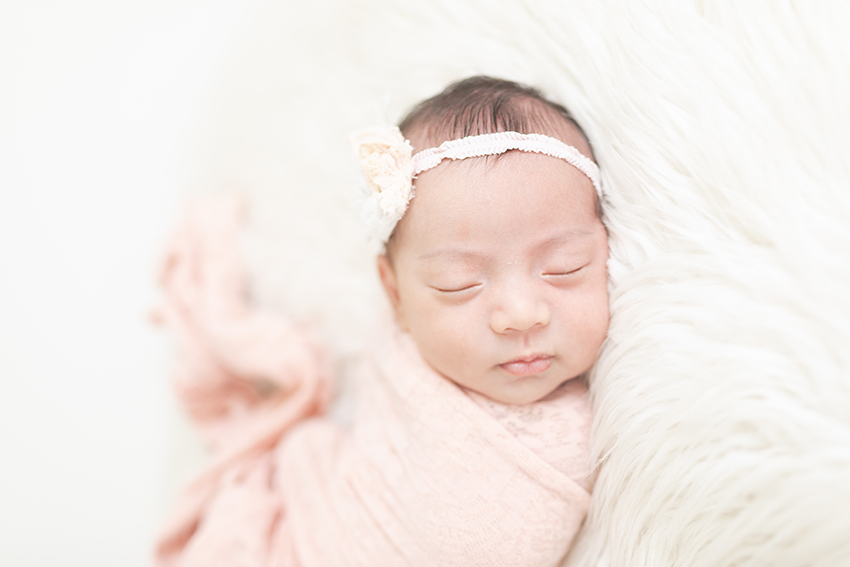

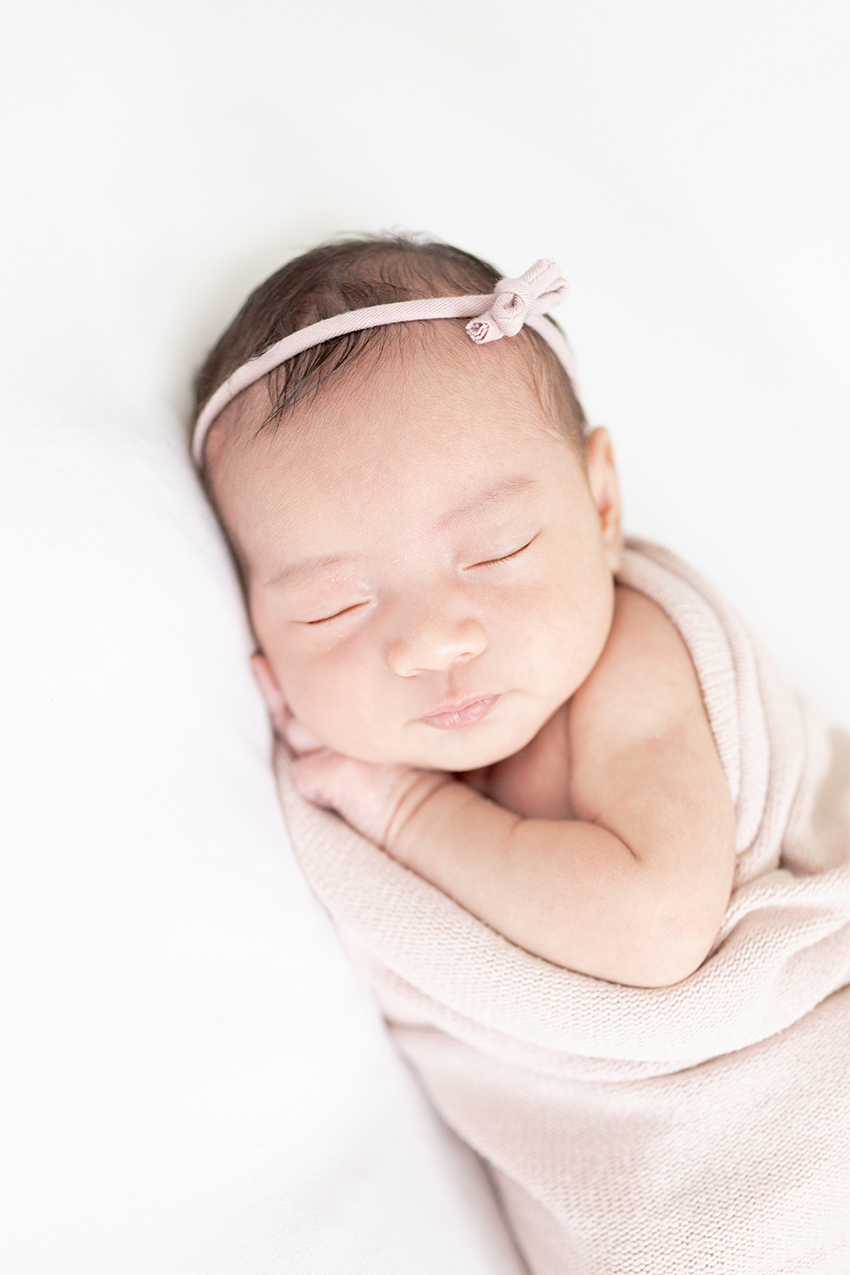
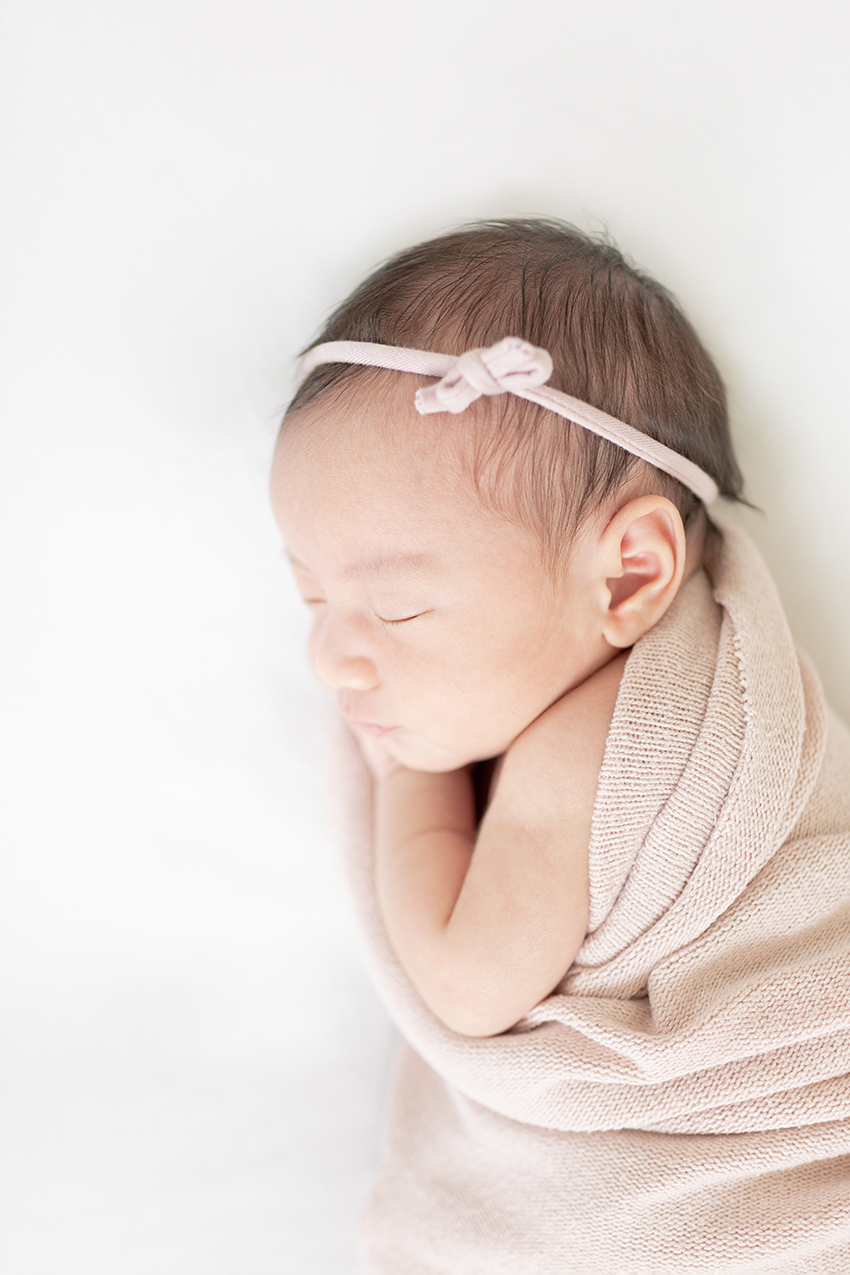
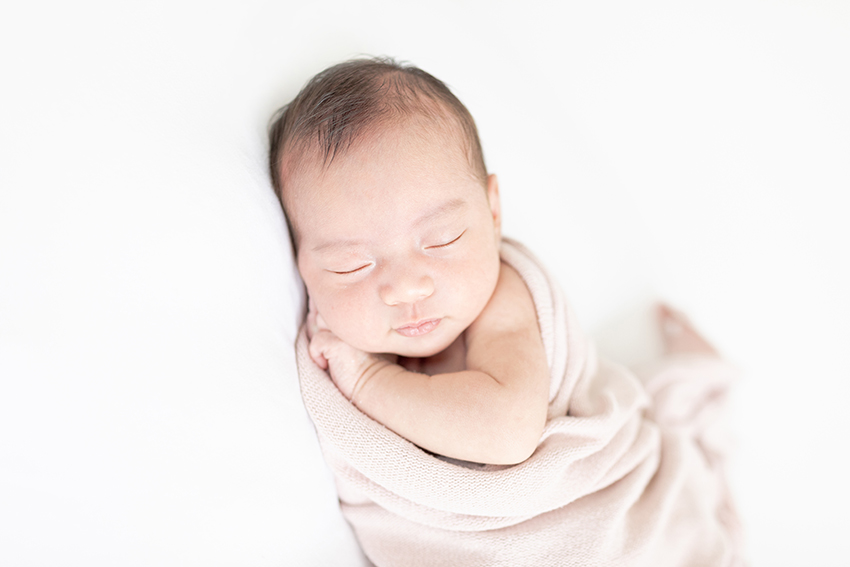
- The last thing I do is a few bare skin photos. I always end with these as there could be an accident and the clean up with interrupt the flow of the photo session.
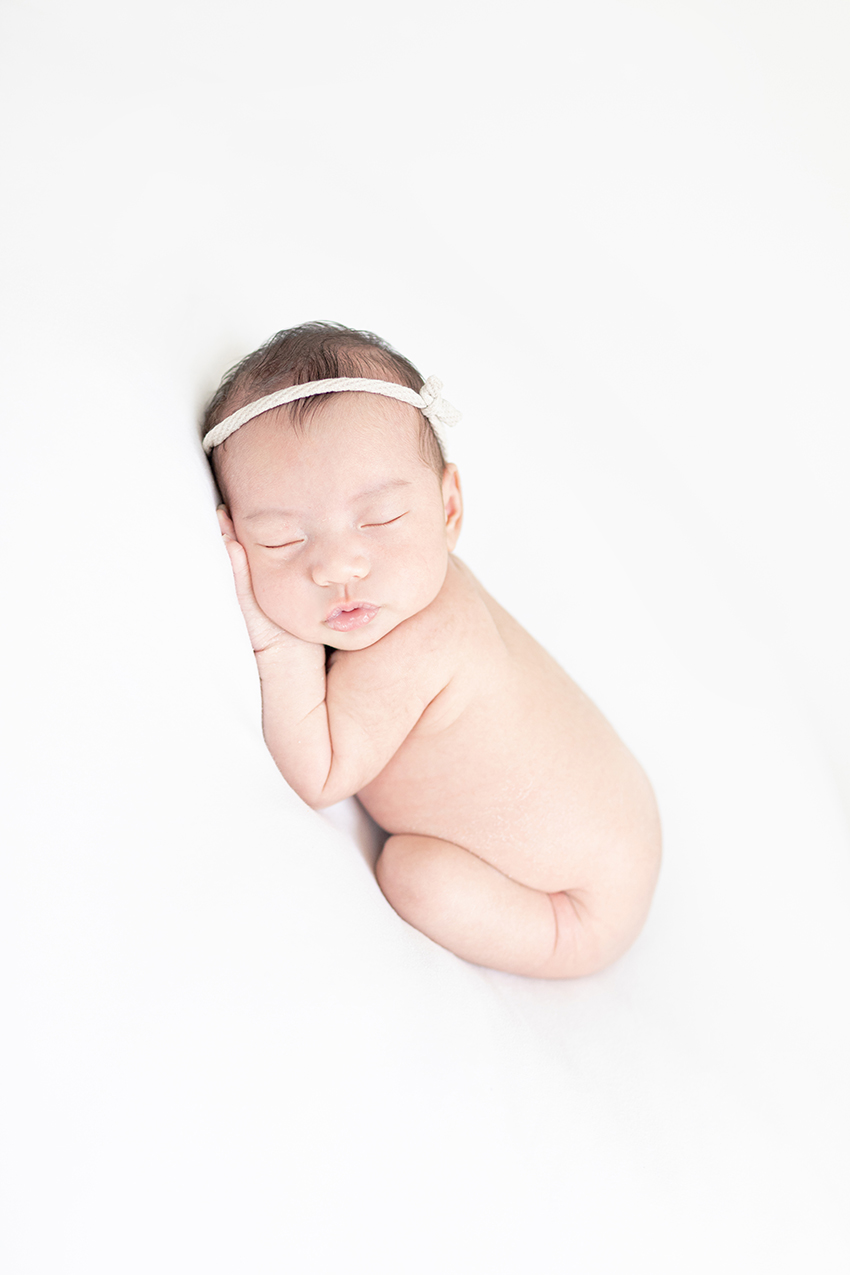

- Before sending the baby home, I try to get at least one ‘awake’ photo. Sometimes the baby is awake earlier in the session and I can grab it then. But, if it’s hasn’t happened yet, the end is a good time to wake up the baby.
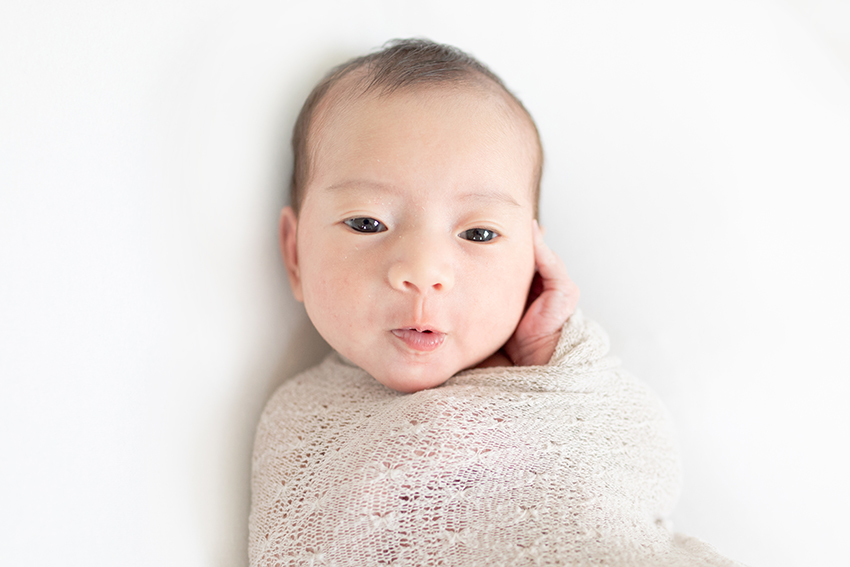
6. Flexibility is Essential
Despite the best planning, not every baby will cooperate with every pose. It’s important to read the baby’s cues and adapt your workflow accordingly. If a newborn seems uncomfortable or is unable to settle into a certain position, it’s better to move on to another pose rather than force the issue. Flexibility also means being prepared to take breaks for feeding or cuddling, as needed.
7. Continuous Learning
Newborn photography is an ever-evolving field, with new techniques and safety guidelines emerging regularly. Commit to continuous learning, whether through online courses, workshops, or by following leading newborn photographers for inspiration. Staying updated on best practices ensures you’re providing the safest, most enjoyable experience for your tiny clients and their families.
Conclusion
A well-honed newborn posing workflow not only improves the efficiency and safety of your photography sessions but also enhances the quality of the images you produce. By preparing your space and yourself, prioritizing the newborn’s safety and comfort, and adapting to the needs of each individual baby, you can create a photographic experience that parents will cherish and recommend. Remember, the heart of newborn photography lies in capturing the beauty and innocence of life’s earliest days with patience, care, and love.
See more newborn photography here!
